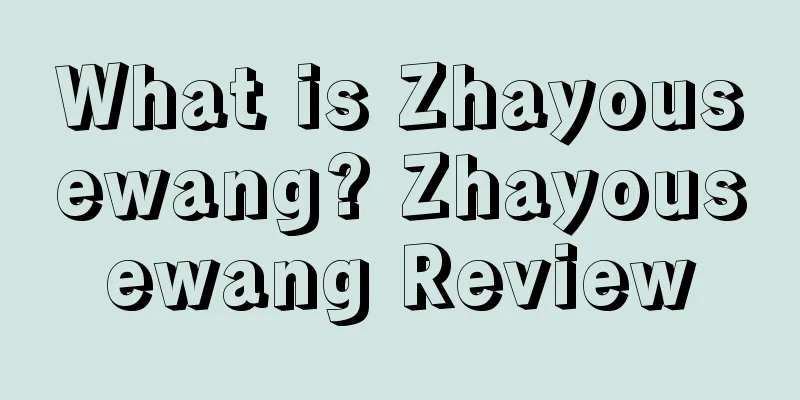Official notice! Cross-border logistics costs may surge 164% next year

|
We just reported some time ago that the United States threatened to leave the Postal Union and demanded that the Postal Union provide a fee reform that is beneficial to the United States. The Universal Postal Union finally compromised with the United States' request and collectively voted to pass a reform plan that is extremely beneficial to the United States (click here to review previous details) At the end of the last article, I analyzed that the cost of postal parcels would definitely increase as a result. However, because the specific content and data of the reform plan had not been officially announced at that time, I could not make further analysis. However, just recently, the State Post Bureau held a press briefing on the Universal Postal Union's reform plan, disclosing to the media specific data and official forecasts of its impact on everyone. Based on some official data, I will analyze the details of this postal reform and its impact on cross-border logistics costs. ◆ ◆ ◆ ◆ Details of the postal fee reform The integration plan V that the Postal Union passed at the last congress mainly supports countries to continue to implement the multilateral rate system and raise and level the terminal fee ceilings for groups 1 to 4. Our country is in the third group of countries. The reform policy of Plan V will mainly affect us in that between 2020 and 2025, our country's export international parcel terminal fees will increase by about 164% compared with 2019. Although the increase is high, Plan V is also the best choice for us. This is because since 2016, international small package terminal fees have undergone structural changes, and the increase in terminal fees is an inevitable trend. Therefore, the reform plans proposed at the last conference all included a substantial increase in terminal fees. For example, Plan B and Plan C would increase our interruption fees by 212% and 185% in 2020, while Plan V would still have a lower increase. Compared with Plan B, the currently implemented Plan V will allow us to pay about 6 billion less in terminal fees in 2020. As for the United States, it can also obtain the terminal fee pricing power it has always dreamed of (although it has to subsidize the Postal Union by 40 million). So in general, the implementation of Plan V is also the result of the efforts of our representatives, which minimizes the impact of the skyrocketing terminal fees on our cross-border industry. However, this plan is still only a transitional plan. The market-oriented reform of postal international parcels and the custom terminal fees are an inevitable result in the future, which means that the cost of parcels will increase more significantly in the future.
◆ ◆ ◆ ◆ What is the impact on our cross-border e-commerce sellers? Industry insiders predict that the transaction volume of the cross-border e-commerce industry will exceed 10 trillion yuan in 2019. The market size of the cross-border logistics industry will also reach about 2 to 3 trillion yuan. Thanks to the postal letter channel, many cross-border sellers can use this channel to send some goods within the letter weight range at a very low cost. Relying on the low freight of postal parcels, some low-priced small items self-delivery sellers can also use the slogan of free shipping worldwide to open up the market with small profits but quick turnover. Even though Plan V is the best compromise at the moment, the increase in terminal costs caused by the reform will inevitably make it increasingly difficult for the above-mentioned small package sellers to survive. However, it is not just the small package sellers who are affected. After a large number of low-priced products disappear, the prices at the consumer end will be raised to a certain extent, and the overall logistics costs including FBA and the first leg will also be affected. At the same time, FBA sellers should also pay attention to those sellers who have transformed from small package operations. After the terminal fees increase next year, there will be another bloody price war. The gameplay we prefer has always been the high-end route that focuses on profitability . Only with sufficient profit margins can we have a stronger ability to withstand shocks than our opponents in possible future competitions. PS. If you want to join the seller discussion group, you can also private message me to let me add you to the group |
<<: The cold winter is coming. How to make profits in the post-Amazon era?
>>: Government investigates Amazon! Sellers may be restricted from offering discounts
Recommend
What is Amazon? Amazon Reviews
Amazon is the largest online e-commerce company in...
Amazon orders are required to upload invoices? What's going on?
In addition to bringing additional tax costs to s...
What is Evermos? Evermos Review
Evermos was founded in 2018. It recruits distribut...
The government has issued a ban! Amazon will be forced to cancel this feature
What do sellers do when they encounter slow-movin...
Cashing out 4.1 billion in 11 days! Stockpiling Made in China! Brother-in-law was criticized by 15 senior officials
While many sellers were unable to return to work d...
What is Wallyt? Wallyt Review
Wallyt is a leading financial technology company d...
Walmart and US publishing giant Meredith Corp teamed up to create purchasable "cookbooks"!
It is learned that Walmart recently announced a pa...
Invitation letter to participate in the Cross-Border Expo
2024 3rd Hainan International E-Commerce Expo and ...
If I currently register an Amazon account, what is the chance of a second review?
Recently, many sellers are preparing to register A...
The pitfalls I encountered in my fifth year at Amazon. Have you encountered the same pitfalls?
Source: Know Nothing I am a junior operator, so th...
What is Move Loot? Move Loot Review
Move Loot is an online furniture resale market loc...
A new round of account bans? A large number of links may be removed, Amazon uncovers fake order gangs!
▶ Video account attention cross-border navigation ...
Amazon may lay off nearly 14,000 employees as it resumes 5-day work week!
Author | Yi Xin@ Disclaimer | This article is copy...
Product recall rate in the U.S. hits a 10-year high! Focus on five major categories
It is learned that on June 1, Sedgwick Brand Prote...
What is Yundang.com? Yundang.com Review
Yundang.com is a professional data service provide...









